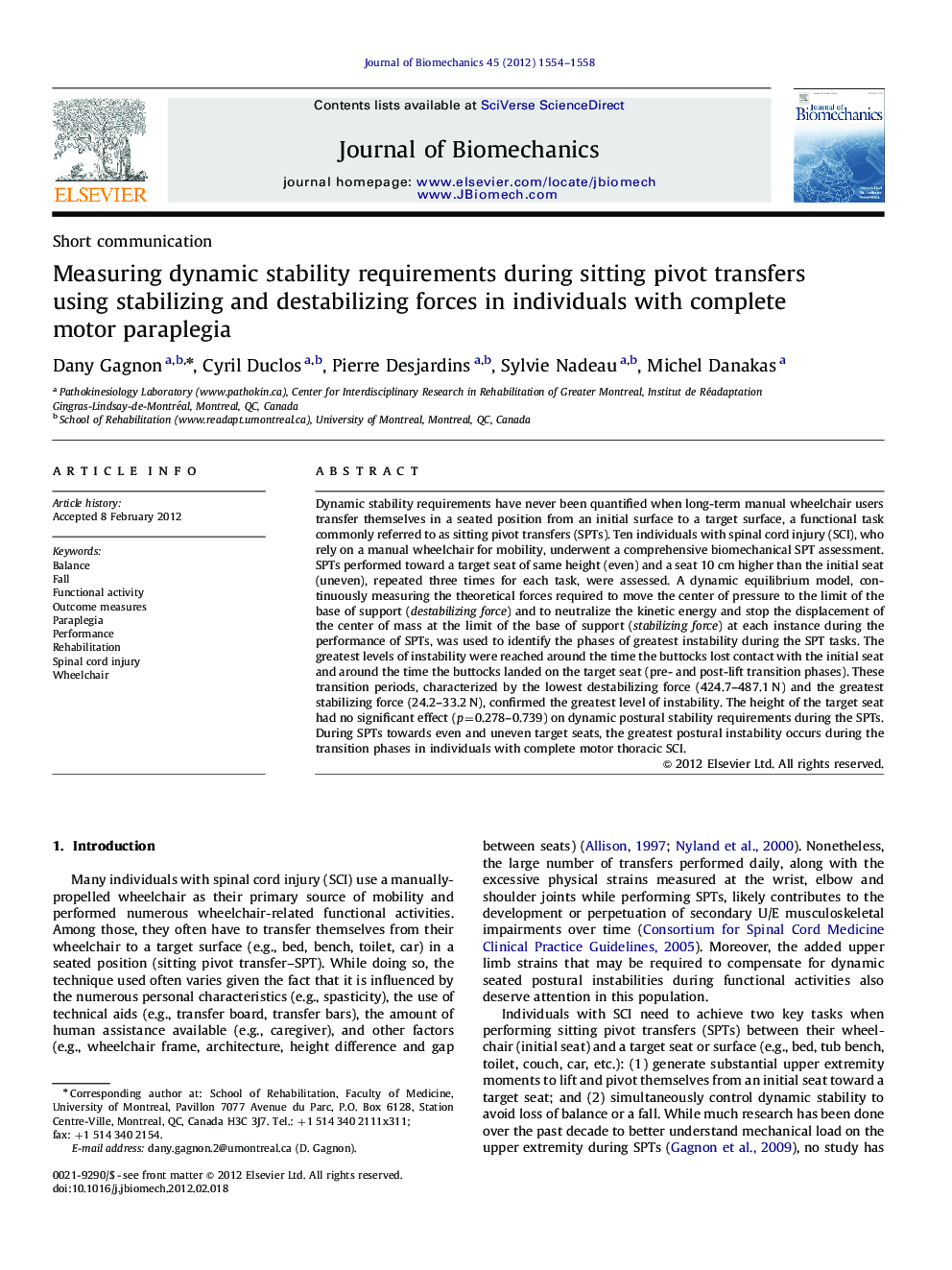| Article ID | Journal | Published Year | Pages | File Type |
|---|---|---|---|---|
| 872304 | Journal of Biomechanics | 2012 | 5 Pages |
Dynamic stability requirements have never been quantified when long-term manual wheelchair users transfer themselves in a seated position from an initial surface to a target surface, a functional task commonly referred to as sitting pivot transfers (SPTs). Ten individuals with spinal cord injury (SCI), who rely on a manual wheelchair for mobility, underwent a comprehensive biomechanical SPT assessment. SPTs performed toward a target seat of same height (even) and a seat 10 cm higher than the initial seat (uneven), repeated three times for each task, were assessed. A dynamic equilibrium model, continuously measuring the theoretical forces required to move the center of pressure to the limit of the base of support (destabilizing force) and to neutralize the kinetic energy and stop the displacement of the center of mass at the limit of the base of support (stabilizing force) at each instance during the performance of SPTs, was used to identify the phases of greatest instability during the SPT tasks. The greatest levels of instability were reached around the time the buttocks lost contact with the initial seat and around the time the buttocks landed on the target seat (pre- and post-lift transition phases). These transition periods, characterized by the lowest destabilizing force (424.7–487.1 N) and the greatest stabilizing force (24.2–33.2 N), confirmed the greatest level of instability. The height of the target seat had no significant effect (p=0.278–0.739) on dynamic postural stability requirements during the SPTs. During SPTs towards even and uneven target seats, the greatest postural instability occurs during the transition phases in individuals with complete motor thoracic SCI.
